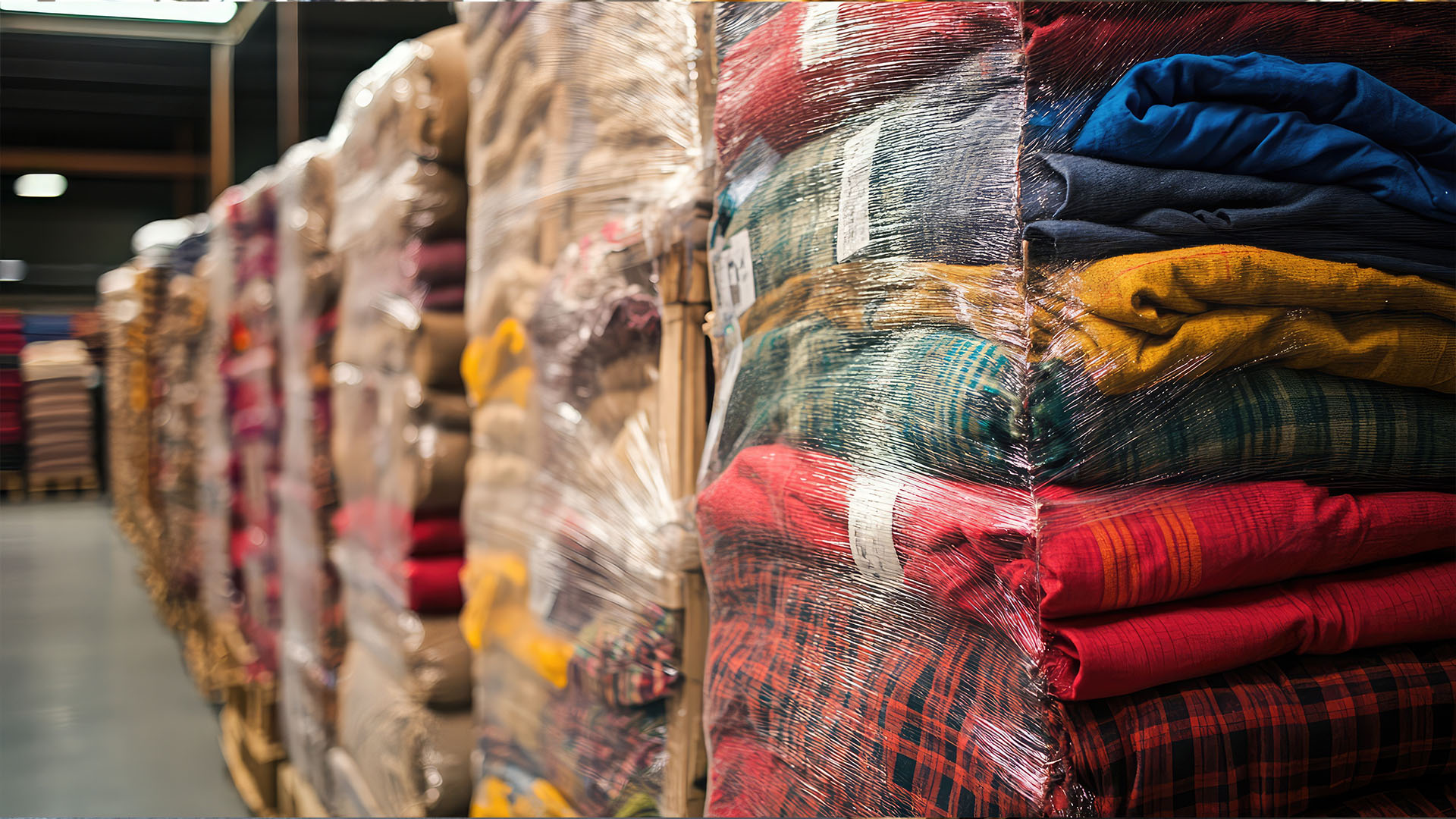Apparel logistics and textile shipping require precision and flexibility. This is where Seasonal peaks, shifting sourcing, and strict regulations converge. Choosing the right mode of transport, ocean or air, can play an important part of on-time delivery and margin. Use this guide to navigate everything from shifting market cycles to the documentation that gets your goods through customs.
1. Market Characteristics: Seasonality, Sourcing, Speed for Textile Shipping
- Volume and Seasonality: Ocean volumes and rates typically climb July through October, aligned to back-to-school and holiday builds. Missed windows can push goods into markdowns or miss floor sets entirely.
- Global Sourcing Hubs & Nearshoring: Major exporters remain China, Bangladesh, Vietnam, and India. Nearshoring to Mexico and Central America is growing to shorten lead times and align with regional trade rules.
- Fast Fashion vs. Luxury Timelines: Fast fashion often selects air freight for responsiveness and predictable launch dates. Luxury shipments tend to move by ocean with enhanced packaging, security, and cost control.
2. Freight Forwarding Challenges: Deadlines, Customs, Quotas
- Tight Delivery Windows: Capacity crunches, rolled bookings, or port disruptions can erase a season. Plan buffers and secondary routings to protect floor dates. Working with a Textiles Freight Forwarder can improve your success rates.
- Customs Complexity & HS Classification: Apparel classification is granular and drives duty. Examples: Cotton T-shirts: 6109.10; Woven dresses of other silk: 6204.49. Reference: U.S. International Trade Commission Harmonized Tariff Schedule.
- Quota, Duties & Trade Rules: Many legacy quotas are gone, but origin verification and anti-dumping enforcement remain active in textiles. USMCA yarn-forward requirements can apply for duty preference. Verify bill of materials and supplier origin early. See U.S. Customs & Border Protection Textile Enforcement and USMCA Agreement.
- Security & Brand Protection: Use sealed, monitored moves and bonded facilities, especially for designer SKUs. Maintain chain-of-custody documentation and conduct supplier audits to deter counterfeits.
3. Logistics Strategy Considerations: Modes, Visibility, Value-Add
- Mode Selection: Air for urgent launches, high-value capsules, or recovery after delays. Ocean for bulk replenishment and margin protection. Hybrid sea-air options to balance speed and cost during strikes or congestion.
- Vendor Consolidation: Aggregate supplier shipments at origin hubs to improve container utilization. Reduce per-unit transport cost and simplify uplift scheduling.
- Inventory Visibility & Tech Integration: Integrate EDI or API with your forwarder for SKU-level milestones. Leverage predictive ETAs and exception dashboards for proactive decisions.
- Value-Added Services: Garment-on-hanger (GOH) containers, origin re-labeling, tagging, and pre-retail packaging to shorten distribution center processing.
4. Compliance & Documentation: The Details That Matter
- Fiber Content Declarations: In textile shipping, declared fiber percentages must match testing. Mismatches can trigger holds, fines, or relabeling orders.
- Country of Origin Labeling: Sewn-in labels are required in many markets. Incorrect origin can lead to seizure or duty reclassification. See CBP Country of Origin Marking Guidance.
- Certificates of Conformity: Children’s apparel and flammability standards (e.g., CPSIA in the U.S.) require valid certifications at entry. Reference: U.S. Consumer Product Safety Commission.
- CITES Permits: Exotic leather products like python or crocodile need CITES documentation. Secure permits prior to shipment to avoid delays. See U.S. Fish & Wildlife Service CITES Program.
- Intellectual Property & Copyright Infringement: Importing branded apparel, footwear, or accessories without authorization from the trademark or copyright holder (e.g., Gucci, Nike) can lead to immediate seizure by customs, destruction of goods, and potential legal action. Check the U.S. Customs and Border Protection’s Intellectual Property Rights Enforcement database before shipping.
5. Reinforcing with Data & Tech
- Air Freight During Disruptions: Apparel air share typically climbs during crises when ocean reliability dips. Build contingency budgets and rates in advance.
- AI for Compliance & Forecasting: Use AI-assisted tools for tariff modeling, documentation checks, and capacity planning. Simulate cost impacts before committing to suppliers.
6. Why Partnering with a Proactive Forwarder Works
- Season-aware Planning: Off-peak rate locks, dynamic capacity access, and faster clearance through accurate pre-filing.
- Compliance Backbone: HS code validation, origin rule checks, supplier documentation audits, and audit-ready records.
- Visibility & Flexibility: End-to-end tracking, SKU-level exceptions, and smart mode switching across ocean and air.
- AI-Backed Insights: Demand prediction, tariff simulations, and optimized routing decisions before you book.
Conclusion
Managing textiles and apparel shipping, from compliance through clearance, calls for planning, foresight, and the right partner. Whether you are navigating seasonal peaks or solving a customs curveball, structure and visibility reduce risk and protect margin.
Need a concise checklist or a deeper dive? We can turn this guide into a downloadable checklist, a webinar outline, or a quick start template for your team.



